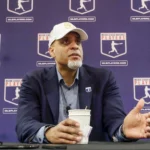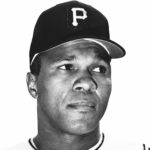Four years after they first compiled a record of what they believed was the penultimate list of the names of every past big leaguer who accrued at least one game day of service on an active Major League Baseball (MLB) roster since 1947 — the year the players’ pension fund was established – two lifelong baseball fans have updated the list to reflect the names of the remaining pre-1980 ballplayers not receiving Major League Baseball (MLB) pensions.
In late 2017 and early 2018, author Douglas J. Gladstone, of New York, and Colorado Springs’ Rod Nelson researched statistics and years of service for each one of the 11,000 individuals who have played in the big leagues since 1947. The number comes from an article entitled “Baseball Demographics; 1947-2016.”
“The men keep dying off, and neither the union nor the league care,” said Gladstone, the author of the 2010 book, A Bitter Cup of Coffee; How MLB & The Players Association Threw 874 Retirees a Curve. “It’s unseemly.”
“In a small way, these factoids serve to shed light on the more compelling human elements and help to create a rich tapestry of baseball history for fans and fellow researchers,” added Nelson, who was managing editor of The Emerald Guide to Baseball from 2007 through 2015. He is also the owner and moderator of an online tracking service that serves as the primary input for biographical changes on Baseball-Reference.com and other databases.
Gladstone and Nelson undertook their project because they were frustrated by the lack of transparency and openness on the part of both the Major League Baseball Players Association (the union) and the Major League Baseball Players Alumni Association (MLBPAA), each of which has steadfastly refused to advise any third party regarding the correct number of pre-1980 ballplayers currently receiving the non-qualified retirement payment that the late players’ union executive director, Michael Weiner, helped to negotiate in April 2011.
According to Gladstone and Nelson, there are only 524 men still alive who began receiving that payment 11 years ago. Some of the men who were receiving it but who recently passed away include Duke Carmel, who was the first man to play for both the New York Yankees and New York Mets, and Don Dillard, the Cleveland Indians, and Milwaukee Braves outfielder who was only 17 games shy of vesting.
In April 2011, men who accrued between 43 game days of service but less than four years of service began receiving $625 for every 43 games they spent on an active MLB roster, up to $10,000.
This year’s payment is supposed to be disbursed to the non-vested men next month.
However, unlike a real pension, which can be passed on to a spouse or other designated beneficiary or loved one, the payment to the non-vested men is discontinued when they die.
The pre-1980 players do not receive true pensions as a result of an error made during the 1980 Memorial Day Weekend when a threatened players strike was averted once the late Ray Grebey, the negotiator for the league, made the late Marvin Miller and Don Fehr of the union the following sweetheart offer: going forward, all that a player needed to be eligible to buy into the league’s health insurance plan was one game day of service on an active MLB roster. And all a post-1980 player has needed to receive a MLB pension since then is 43 game days of accrued service credit.
At the time, the vesting requirement for a pension was four years of service credit.
The problem was, neither Miller nor Fehr asked for retroactive coverage for the men who had more than 43 game days of service but less than four years.
Dan Foster, of the Colorado Springs-based alumni association, has consistently refused to turn over a copy of the list that is being used to verify which player is to receive the payment and which player is not eligible for it. And neither the alumni association nor the union has any quality control mechanism in place to know for certain if the last listed address they have on file for the player is, in fact, correct.
As recently as 2019, for example, men such as former California Angels infielder Don Wallace, who attended Oklahoma State University and who now resides in Manitou Springs, Colorado, didn’t know they were due monies. On the team’s roster from April 12 to June 3, Wallace appeared in 23 games.
For his approximately 52 days worth of service credit, Wallace was supposed to receive a check of $700 prior to taxes being taken out. By comparison, a vested retiree can currently earn as much as $245,000 a year. After Gladstone told him to contact the union, he received a lump-sum payment for nearly eight years of outstanding monies due him.
Though men who played prior to the establishment of the MLB pension fund, on April 1, 1947, didn’t pay union dues, they nonetheless received up to $10,000 per year in 1997. Veterans of the Negro Leagues received the same amount in 1997 and 2003.
A copy of the updated list that Gladstone and Nelson prepared is available upon request.
If you’d like to speak to either of them, Gladstone can be contacted at 518-817-8253. Nelson can be contacted at 313-285-9922.
Author Profile
Latest entries
 MLBDecember 14, 2022A Tale of Two Wyomingites
MLBDecember 14, 2022A Tale of Two Wyomingites MLBJuly 2, 2022Asking for Accountability From a POC Isn’t Bigotry
MLBJuly 2, 2022Asking for Accountability From a POC Isn’t Bigotry MLBFebruary 5, 2022A Valentine’s Appeal to Tony Clark, Executive Director, Major League Baseball Players’ Association
MLBFebruary 5, 2022A Valentine’s Appeal to Tony Clark, Executive Director, Major League Baseball Players’ Association MLBJanuary 19, 2022MLB: Pre-1980 Players Without a Pension List Now Stands at 525
MLBJanuary 19, 2022MLB: Pre-1980 Players Without a Pension List Now Stands at 525


Thanks for bringing attention to this!
I don’t feel bad for these players. They were subject to the rules in place at the time, as are all employees of any job. It is not incumbent upon any future decision makers to allow these people to benefit from different and newer rules. Unless I am missing something, why is this even an issue? The author seems to want to take $ from one group and give it to another group when that other group has zero legal entitlement to it. Please correct me if I am wrong!
What bunch of selfish greedy men they are! These former players should be getting the same money as these any players are getting! It not like union can’t afford it! Glad I don’t waste my money on this sport anymore!!
Jay,
Those players in 1980 many lost their jobs because of the strike & these players helped support the new CBA agreement. That’s what is missing….